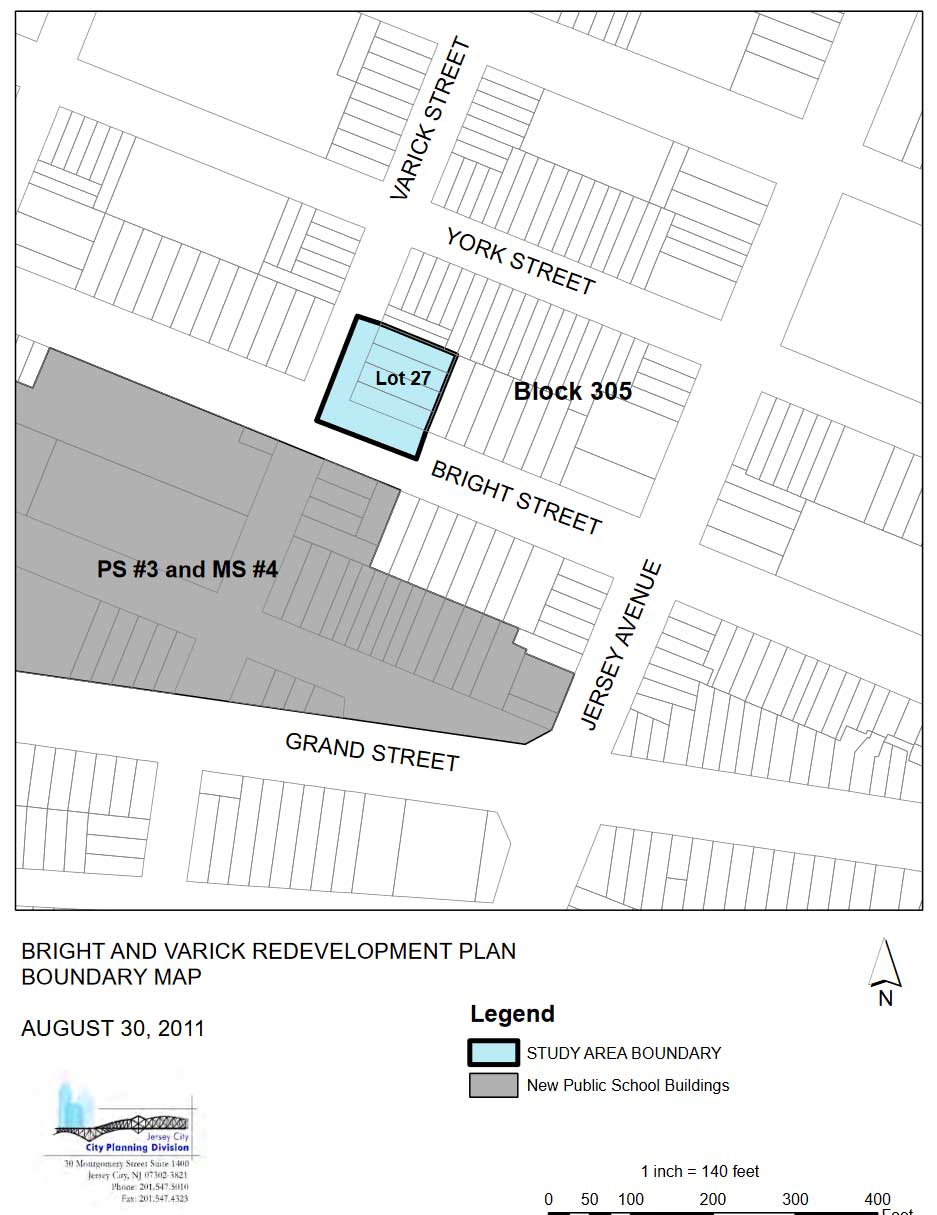
A saga involving a building of “micro units” averaging around 340 sq. ft. each has been unfolding in Van Vorst over the last half decade, and the battle appears to be over following a court ruling. But to understand how a building so dense is coming to the neighborhood, one must take a look at Jersey City’s complicated zoning process.
The story of the development goes back all the way to November 2011, when Jersey City officials adopted the Bright & Varick Redevelopment Plan. It was designed to spur development on a property that was formerly used as temporary classroom trailers for nearby PS#3 and MS#4, which consists of just a single tax lot. The redevelopment plan had no specific density limits and while the changes included a maximum parking requirement of one space per unit, there were no minimum parking conditions laid out.
Following the changes, Rushman-Dillon drew up plans for a five-story, 87-apartment “micro-unit” development with no on-site parking spaces included. The project covered 100% of the lot, also allowed under the redevelopment plan, and was presented to the city in September 2013.
However, the Planning Board did not hear the application in a timely manner and eventually rejected it in January 2014. Members of the Van Vorst Park Association (VVPA) had argued that the project’s proposed density was inappropriate for the area’s quiet streets and that residents were left out of the preliminary approval process. One member even went so far to express fear the building would create a “Hoboken-like atmosphere” during a meeting.

Rushman-Dillon sued over the denial in February 2014 and seven months later, Hudson County Superior Court Judge Joseph Turula ruled in favor of the developers. He granted automatic approval of the project due to the board’s failure to hear the application during a 95-day deadline prescribed by state law, a ruling that was later appealed.
Bad news for the project’s opponents came in May last year, as two appellate court judges ruled against the city and the VVPA. The judges noted that there were “numerous noticed public hearings during the redevelopment process at which no member of the public, including VVPA, appeared and objected regarding the issue of density or on any other basis.”
The VVPA appealed that decision all the way to the state’s Supreme Court, who declined to take up the case in December last year and effectively ended the story. So why did this all happen?
It all goes back to the original redevelopment plan, which essentially created an environment where the micro-unit building could be applied for easily due to the zoning changes it enacted. The plan’s scale of one tax lot might seem minuscule, but not in Jersey City. A significant amount of tiny plans are scattered through the city; the Hoboken Avenue Redevelopment Plan consists of just two parcels, while the Summit and Fairmount Avenue Redevelopment Plan applies to just three lots.
Redevelopment plans in Jersey City are also extremely common; the city has over 100 of them, by far the most of any municipality in the state. Officials also tend to make changes to the plans quite regularly; just last month, the Enos Jones Park Redevelopment Plan was unearthed and the Jersey Avenue Park Redevelopment Plan was modified last year and further changes could be coming soon.
The realities of Jersey City’s zoning make being vigilant about development somewhat difficult, and the best way to reform the system, especially during an ongoing building boom, is likely to be an ongoing debate among residents.


